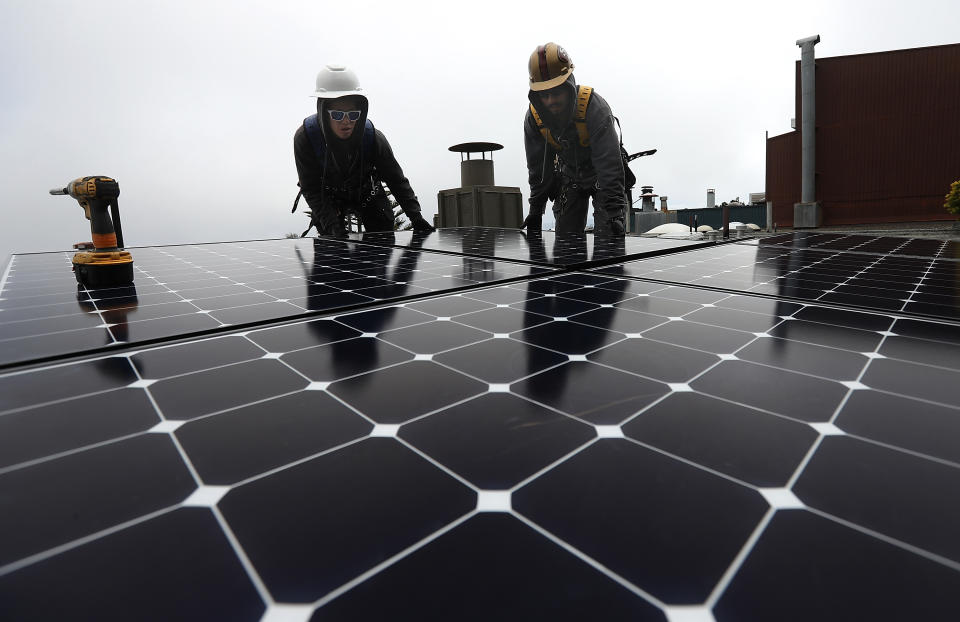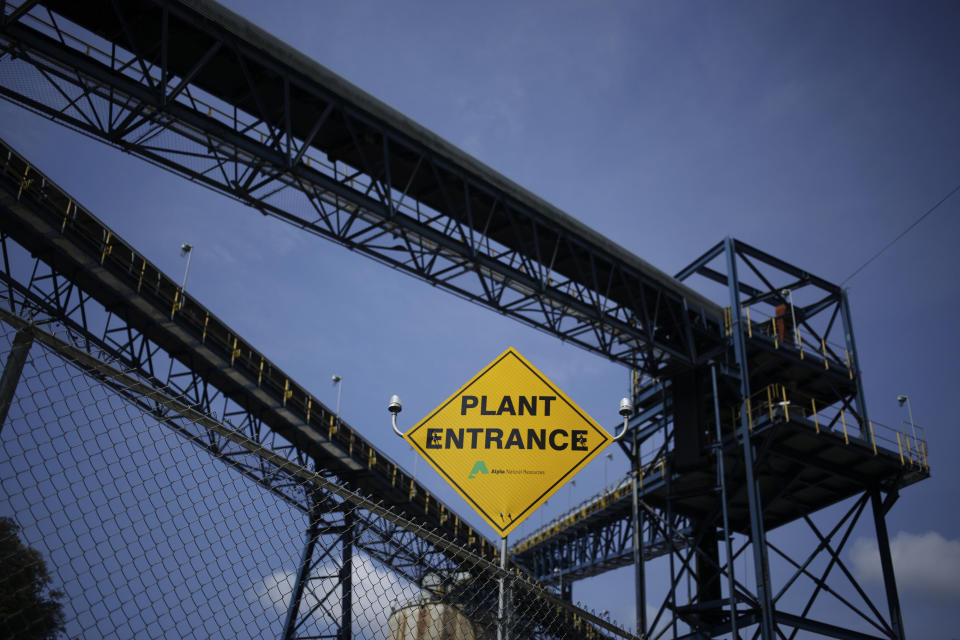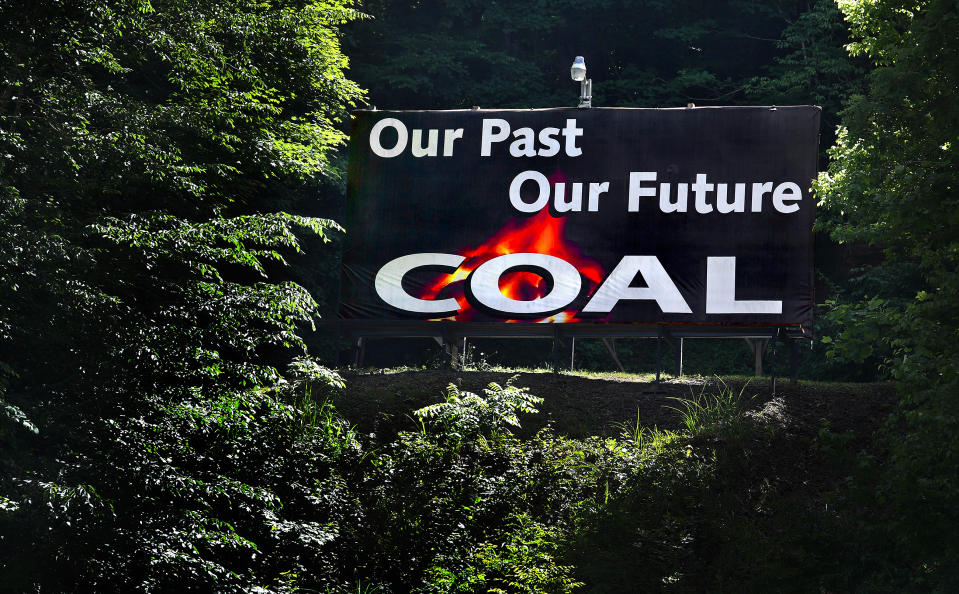Revenge of the dinosaurs: Administration seeks technology to revive coal

In a sign of just how serious the Trump administration is about bolstering the declining coal industry, the federal Department of Energy is requesting designs for smaller, theoretically more efficient “modular” coal plants. This comes as natural gas has captured an increasing share of the electricity market, while prices for renewable energy sources like wind and solar continue to drop, making coal an increasingly unattractive option for energy producers.
According to the U.S. Energy Information Administration, 30.1 percent of the nation’s electricity comes from coal-burning plants. As recently as 1997, coal’s share was 52.8 percent. It is unlikely to enjoy such prominence ever again.
Released earlier this week, the request for information from the DOE’s Office of Fossil Energy — the first step in a process that could eventually see projects funded with taxpayer dollars — seeks “input on the development of small-scale, modular coal-based power plants of the future.” These smaller, modern plants would have to feature “operational flexibility, high efficiency, and low emissions.”
No funds are attached to the request for information, which is usually followed by a request for proposals. But the mere announcement of the initiative suggests that Energy Secretary Rick Perry, the former governor of Texas, takes seriously President Trump’s promise to make coal the centerpiece of his energy policy. Environmental Protection Agency Administrator Scott Pruitt has also been a zealous advocate for coal, in a striking departure from his agency’s mission. The three men, like many other high-ranking officials in the administration, have voiced profound skepticism about whether burning fossil fuels contributes to global warming. Science contradicts this view.

Environmentalists and energy experts contacted by Yahoo News for this article roundly criticized the department’s interest in new coal plants as misguided, a waste of time if not yet of money. “The construction of any new coal power plants, modular or otherwise, is insane,” says Michael Hendryx Smith, a public health expert at Indiana University-Bloomington who has written extensively about the hazards of the coal industry. “Climate change is a huge problem, coal reserves are in decline, natural gas and other fuel sources are economically superior. This is more stupidity from the current administration and another effort to support business interests over the well-being of the human race.”
The department’s detailed guidance, titled “Coal-Based Power Plants of the Future,” says that projects should have at least 40 percent efficiency and “must be carbon capture ready,” though they do not actually have to include carbon-capture technology, a process meant to minimize emissions of greenhouse gases. Although carbon sequestration has tantalized with the promise of what Trump has called “beautiful clean coal,” the technology remains unproven.
In keeping with the precepts of “modular” design, which has become popular in commercial and residential construction, the plan calls for “high-quality, low-cost shop fabrication” and “simplified maintenance features,” among other features that would presumably drive down costs while increasing efficiency. On average, American coal plants are only 37.4 percent efficient, meaning that nearly two-thirds of the coal burned is not converted to electricity. The nation’s most efficient coal plant, in Arkansas, boasts an efficiency of 42 percent. The most efficient coal-burning plant in the world, in Denmark, is 5 percentage points more efficient than that.
Solar panels have an efficiency of only about 15 percent, but sunlight, unlike coal, is a free, renewable resource. The cost of solar panels has dropped by 80 percent in the last decade. Earlier this year, Bloomberg estimated that solar will soon be “the lowest-cost option almost everywhere.” California, the nation’s most populous state, has mandated that, starting in 2020, every newly constructed home must be outfitted with solar panels.

Given both public perceptions and economic pressures, research on new coal plants may be tantamount to the Pentagon seeking a design for a superior musket.
“The Department [of Energy] has a long history of trying to find new coal-burning technologies to try to deal with the fact that coal isn’t competitive in today’s marketplace,” says Elgie Holstein, an energy expert at the Environmental Defense Fund who previously worked in the Obama administration. Holstein adds that there is “no shortfall, there is no need, there is no demand for coal-fired plants.” (The Department of Energy declined multiple requests from Yahoo News to answer questions about the modular coal plant initiative.)
Yet there does remain President Trump’s need to maintain political support in Appalachia and the Upper Midwest, where resource extraction and energy production were once economic mainstays. During the presidential campaign, Trump’s rival, Democratic candidate Hillary Clinton, said her administration would “put a lot of coal miners and coal companies out of business.” Though her point was about the need to shift to a greener economy, Trump and many of his supporters seized on the comment. West Virginia, the heart of coal country, gave Trump one of his biggest margins on Election Day. He also won Ohio and Pennsylvania. Clinton subsequently said she regretted no comment she made during the campaign as much as the one about coal miners.

Not that Trump has found it easy to fulfill his promise. In the early months of his presidency, Trump and supporters like the EPA’s Pruitt claimed that the administration had created some 50,000 coal-related jobs. This claim was false: As of mid-2017, only about 1,200 coal jobs had been created. In 2017, 27 coal plants were in the process of being closed. That’s only six fewer than the total mothballed during President Barack Obama’s second term in the White House, according to Bloomberg New Energy Finance.
That trend continues despite Trump’s efforts. In the first 90 days of 2018, three coal plants shut down in Texas, leading to an estimated 850 job losses. The state now has the capacity to get more energy from wind than coal, a remarkable turnaround for a state so identified with fossil fuel extraction.
That has led the administration to artificially bolster the coal industry — a process that Republicans called “picking winners and losers” when the Obama administration encouraged solar-power development. A day after the Department of Energy announced it was welcoming research on modular coal plants, Perry announced that he was considering using the Defense Production Act to keep coal and nuclear plants from shuttering, on the theory that the continuing operation of coal plants is a matter of national security. The American Security Project has, on the other hand, called global warming — to which coal-burning contributes — an “accelerant of instability” in international relations.
Environmentalists greeted the push for new coal plants with dismay, even if the move wasn’t exactly unexpected. “The fact that the Trump administration is trying this new small-scale coal push isn’t surprising,” Sierra Club legislative director Melinda Pierce told Yahoo News, “since the Trump administration has always had a difficulty with facts, standards and basic economics.
“Making smaller coal plants doesn’t make coal cheaper or cleaner, it just forces the public to subsidize a dangerous fuel source of the past.”

Read more from Yahoo News:
Trump says release of detainees proves Kim Jong Un wants to bring North Korea ‘into the real world’
Women candidates score in the primaries, but with an asterisk
Trump says he wants ‘victory for the world’ more than Nobel Prize
Melania Trump’s ‘Be Best’ materials have a familiar ring to them
Trump offers full embrace of NRA, leaving Parkland pause behind



